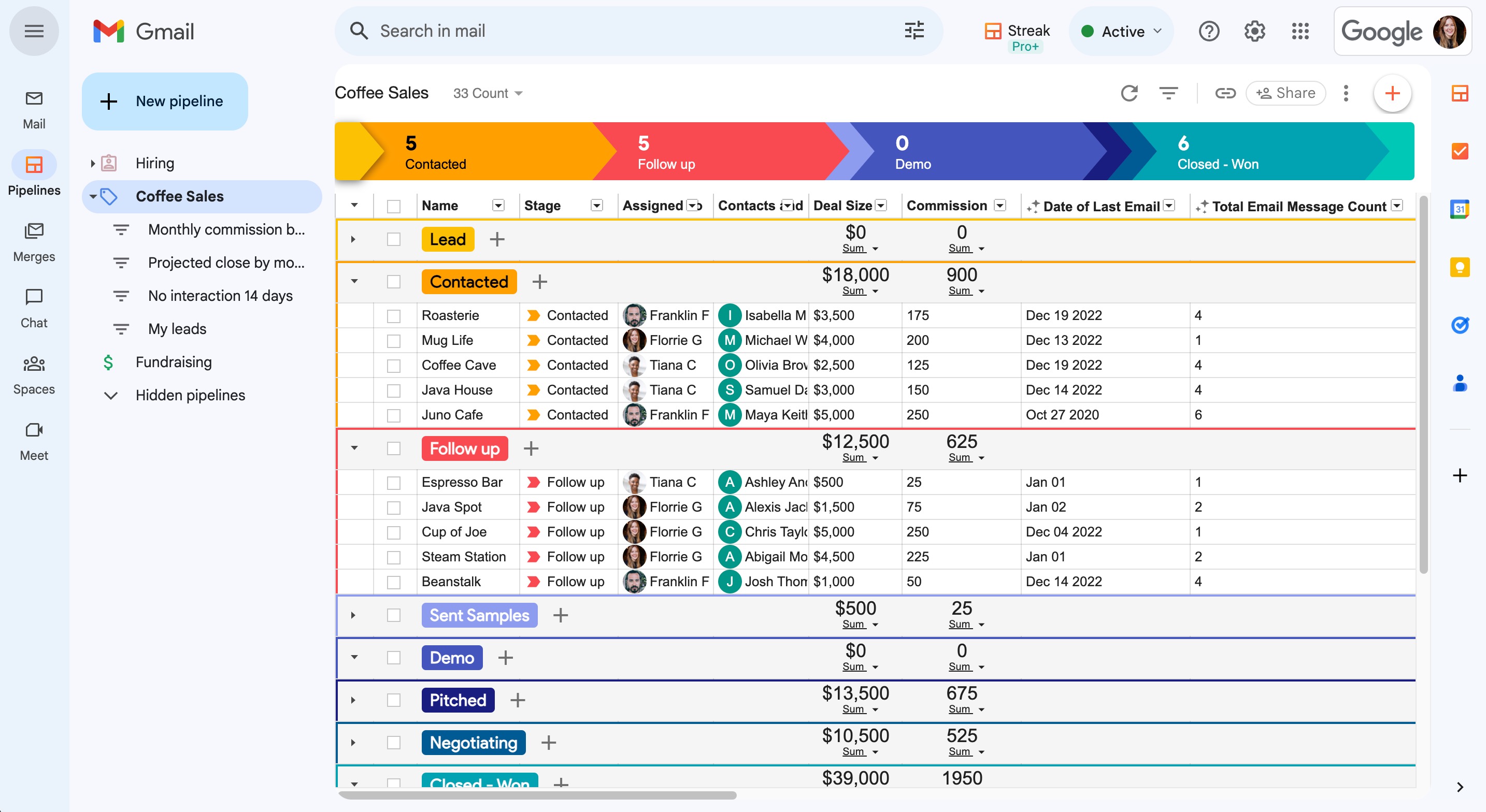Opening now...
Lead qualification: Definition, criteria, and process
Lead qualification is the process of predicting whether a lead will be a good fit for your product or service. Qualifying leads takes into account both a lead's interest in the product and a lead's viability of becoming a customer.
Many companies use the term "sales qualified lead," or SQL. This means the sales team qualifies the leads, not the marketing team or another automated process. In most cases, this happens through a phone conversation where the sales rep asks qualifying questions and gauges how likely someone is to convert.
No two lead qualification strategies should ever be identical because every prospect is different, especially across industries. For example, a real estate agent may have a lead who doesn't appear ready to buy a house for another year. This person isn't a qualified lead for them, but they really aren't a qualified lead for a company that sells suspenders, as this person has never expressed interest in that article of clothing.
However, let's say someone just moved to a new area and is looking for an immediate internet connection. This person is a highly qualified lead, and companies like Comcast and AT&T will quickly start pulling out all of the stops to get their business.
Why is lead qualification important?
In short, because lead qualification works. Companies spend time, money, and resources qualifying (and disqualifying) leads because sales teams need to know where they should be allocating their time. In many businesses, sales teams have a steady stream of leads to work with, and having a clearly defined method for identifying the most qualified leads helps the reps focus on the right people more efficiently.
On the other end of the spectrum, some sales reps like to burn through leads. This means they spend little time with each lead until they find one that's so primed to buy that it takes little work to make the sale. However, this can quickly turn into a huge waste of resources for the company. A defined lead qualification strategy helps a sales rep feel confident that more of the leads they're working with might actually convert; not just once in a blue moon.
Companies also use qualified leads as a reporting tool. It's a great way to measure a sales or marketing team's effectiveness, while still controlling for lead quality. For example, if Rep 1 closes 10 out of every 20 qualified leads, while Rep 2 closes 4 out of every 20, the company can quickly compare performance and understand who's more effective.
Lead Scoring
Lead scoring and lead qualification are closely linked, and many companies use lead scoring as a way to qualify their leads.
Lead scoring assigns points to different actions that a lead takes. For example, visiting a high-intent webpage might give a lead 10 points, and maybe filling out a form on that same page gives them an additional 20 points. From there, companies can handle things based on their strategy and past successful experiences.
Some businesses like to send leads to the sales team only once they've hit a certain lead score threshold. Others will send any leads who aren't immediately disqualified to the sales team, but they're ordered in the dialer or email platform from highest lead score to lowest.
This style of lead scoring is, understandably, handled by the marketing department and scores are given automatically using software. High-scoring leads are marketing qualified leads, or MQLs. Sales lead qualification, however, usually happens one by one through a phone conversation.
Common lead qualification criteria
The first step in setting up a lead qualification strategy is to define beforehand what questions should be asked and what answers must be given. Only the leads who answer questions satisfactorily should continue through the sales process.
Here's an example of a lead qualification checklist that a sales rep at a solar panel company might use:
- How much money do you have set aside for solar panels?
- Are you the ultimate decision-maker? If not, can we bring that person into our next conversation?
- Why do you want solar panels? How do you think they'll help you?
- When would you be ready to start if you like what you hear on our call?
This is known as the BANT framework, which covers budget, authority to make decisions, needs, and timeline. There are other lead qualification frameworks, such as:
- MEDDIC: Metrics, economic buyer, decision criteria, decision process, identify pay, and champion
- CHAMP: Challenges, authority, money, and priority
- SPIN: Situation, problem, implication, need-payoff
What is the lead qualification process?
Most organizations that generate and qualify leads follow more or less these four general steps.
1. Generate leads
First, the company must find people who are potentially interested in their product or service. A few strategies used are:
- Paid advertising
- Email capture via a website download (such as a white paper or eBook)
- Cold calling
- Cold emailing
- Direct mail
- Billboards
In many companies, the marketing department is responsible for lead generation and sales owns lead conversion, but some industries leave prospecting up to the sales team, too. That's usually for industries with higher-ticket offers.
2. Track leads with a CRM

Once a business has leads, the team needs a way to organize and manage all of them. Usually, this is done with a customer relationship management (CRM) tool. With these tools, marketing teams and sales reps can quickly filter and sort through their leads, set up workflow automation, and see comprehensive information about each lead in one place.
Pro tip: Consider Streak if you're struggling with this step of the lead qualifying process. Our software is a CRM that integrates directly with Gmail, allowing you to keep track of your leads using a tool you're already familiar with and using each day. A separate page is created for each lead where sales reps can then see all past information gathered on that lead (plus anything publicly available, like on LinkedIn). This information will, of course, include where each lead is in the sales process and what emails have been sent back and forth.
3. Identify MQLs
Marketing qualified leads (MQLs) are just what they sound like; leads that the marketing team has qualified to be worked by the sales team. At this stage, qualifying is done en masse using lead qualification tools. For example, leads might turn into MQLs if they submit a form response that indicates high-intent, or if their lead score crosses a certain milestone. Once the leads pass a certain threshold, they are handed over to the sales team.
Note: Many CRMs can handle lead scoring, but often organizations need custom-built solutions and purchase software that's specifically designed for lead scoring.
4. Figure out who among your MQLs are SQLs
As we've discussed previously, sales lead qualification typically happens over the phone. Once a sales rep asks a series of questions and the lead answers in a satisfactory way, the rep can move forward in the conversation or set an appointment for another sales rep to close the lead.
Disqualifying leads
Every company's leads fall into one of three buckets:
- Hot leads that pass all MQL and SQL thresholds and continue to move through the sales process
- Decent leads that aren't slam dunks, but may get there with some more marketing or a push from the sales team
- Dead-end leads that are not a good fit and should be immediately disqualified
Many companies make the mistake of having a lead qualification process in place, but still sending every lead to the sales team. This wastes resources and fills sales reps' time with calls that won't go anywhere.
Worse, sales reps are forced to talk to low-quality leads and will soon believe all leads are dead-ends. They'll start treating even the best leads like they don't have much chance of converting. Of course, this is extremely damaging to any company.
When you disqualify leads, they no longer get more time with the sales team — but that doesn't mean you delete them from your database. Plenty of leads will be ready in the future, so an effective, long-term email strategy can help re-engage them when the time is right.
Disqualifying questions
There are two main times that your company should disqualify leads:
- During the lead generation phase
- When the sales rep talks to the lead
During lead generation, disqualification generally happens on autopilot. This might look like a SaaS company requiring a lead to fill out a questionnaire with answers that have "required" responses before they're shown a sales rep's calendar and able to book time.
Of course, not all industries should disqualify leads. For example, if you own an eCommerce site that sells items for under $20, your goal is volume. You're trying to get as many people on your email list and visiting your store as possible, and they'll "disqualify" themselves by not purchasing.
Furthermore, you don't have a sales team whose time you try to maximize.
In industries where you should disqualify leads, the next opportunity comes when the lead talks to the sales rep. Often, they'll ask the same questions that they already answered on the form but then go more in-depth. Sometimes, answers need context, and sales reps can gather that.
In addition, understand that some answers should automatically disqualify leads from continuing on their buying journey, while others just may indicate they're a lower-quality lead. For example, if the lead isn't the ultimate decision-maker, your sales team will still want to talk with them. However, if they live in a state where your mortgage company doesn't lend, that's a dealbreaker.
Want some examples of disqualifying questions? Try adding some of these to a form on your website or maybe even asking them live during a meeting with a lead. Note: These can (and should) change based on your industry and goals.
Good disqualifying questions
- "How much money do you have set aside for [XYZ]?"
- "What state do you live in?"
- "When would you like to get started?"
- "How many hours per week do you have to spend on [XYZ]?"
- "What are your specific needs when it comes to [XYZ]?"
- "What are you hoping to get out of [XYZ]?"
All of these questions could potentially end in immediate lead disqualification based on the answer.
Follow up with qualified leads to increase conversion
Just because a lead is disqualified right now doesn't mean they'll forever and always be disqualified. To nurture relationships with leads who show future promise, you'll need a marketing tool that can handle email automation. For example, Streak can send personalized emails to massive lists of people using mail merge technology and then continue to send follow-up emails for as long as you want.
EMBED VIDEO -> https://www.streak.com/university/mail-merge
Nurturing both your cold and warm leads is an effective, steady way to prospect. Even if the percentage of leads who eventually re-engage with you isn't very high, one deal can make all of your nurturing worth it, especially if one person on your team can easily handle emails sent to thousands of people.
See how Streak gives 750k+ happy users all of the tools they need, right in Gmail, to make long-term email marketing simple and effective. Get started in 30 seconds (for free!) today.
Subscribe to our blog
Stay in the loop with Streak’s latest features and insights.

.png)


.jpeg)


.webp)


